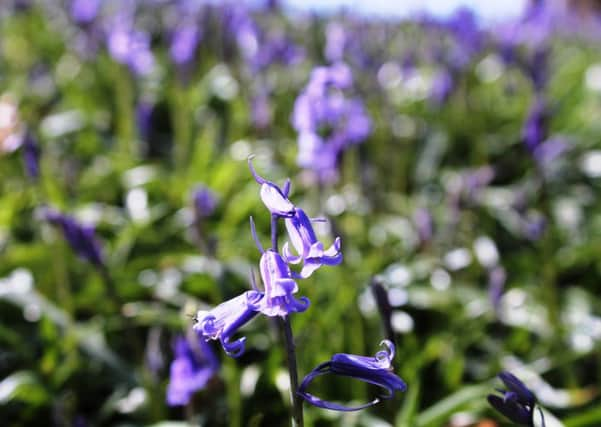Gardening: Wild wonders


Some plants are meant for the wild; others are happy and at home in a cultivated garden. May provides the perfect example – the bluebell.
A few years ago, bluebells were making the headlines for all the wrong reasons. The native English plant was under threat from an invader – the Spanish.
Advertisement
Hide AdAdvertisement
Hide AdBig names in the world of horticulture sprang to the defence of the beleaguered variety, fearing that it was going to be forced out by the more vigorous foreign upstart.
Then it all went quiet; until the following May, when, just like a woodland filled with emerging bluebells, the story sprang up again – basically, don’t plant Spanish bluebells – British are best.
But why anyone would want to plant bluebells in their garden is a mystery.
Unless they have an area of deciduous woodland, and are happy to let the bulbs naturalise and spread, then there are many other bulbs far more suitable for the garden.
Advertisement
Hide AdAdvertisement
Hide AdEnglish bluebells (Hyacinthoides) are flowers of the wild, of those deciduous woodland, where they bloom before the canopy of leaves shuts out the light from the forest floor.
They grow and spread with amazing speed, and they have become a familiar and much-loved sight in late April and early May.
The Spanish bluebell (Endymion) can tolerate more light than its English counterpart – hence, its spread is greater.
But once you have planted bluebells (be they English or Spanish) you will have a devil of a job removing them.
Advertisement
Hide AdAdvertisement
Hide AdNo matter how deep you dig to evict them, there will always be one or two bulbs left to re-start the colony.
The recurring fear is that anyone who does want to plant bluebells may plant the Spanish instead of the English.
But if you buy from a reputable source, and check the Latin name of what you’re buying, there is no chance of mistaking one for the other.
Alternatively, plant squills (Scilla). Delicate, but diverse, these bulbs range from miniatures which will do the rockery proud in February; S sibirica reaches six inches in height and produces violet blooms between March and April, but there are also white and pink forms.
For a really early show, bulbs can be planted in pots indoors.
Outdoors, overcrowded clumps should be lifted and divided in early September and replanted immediately.